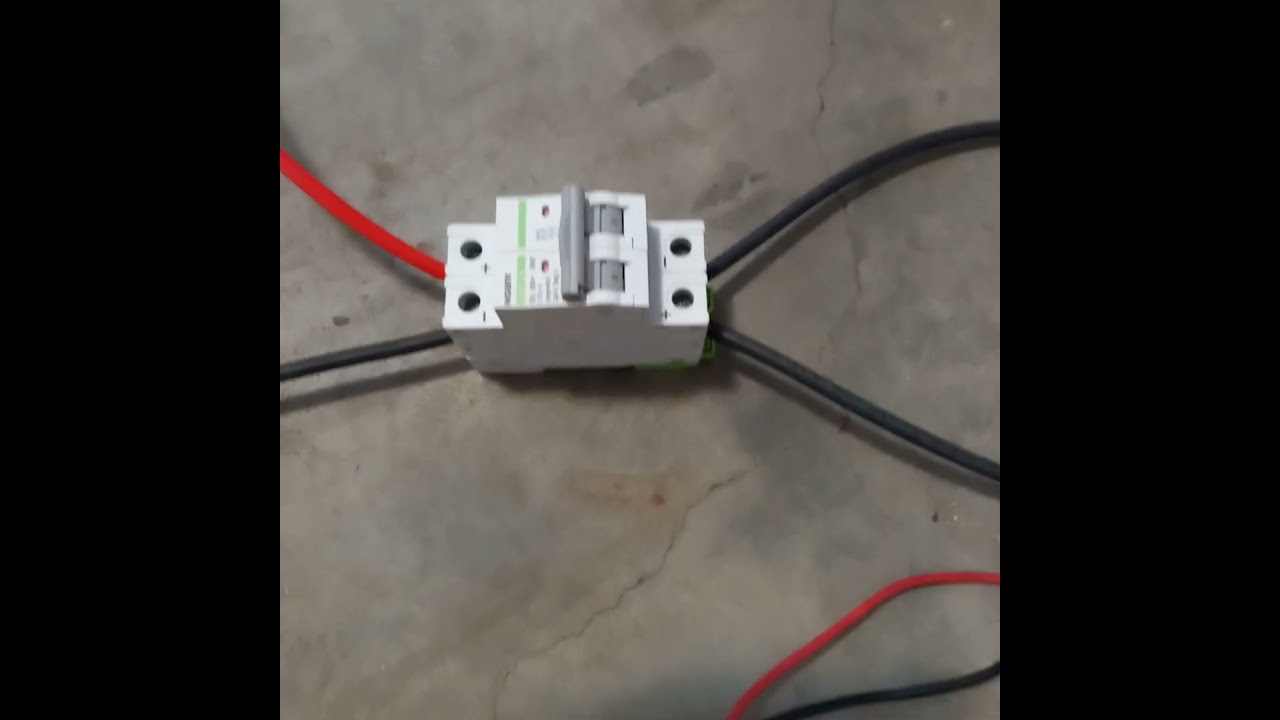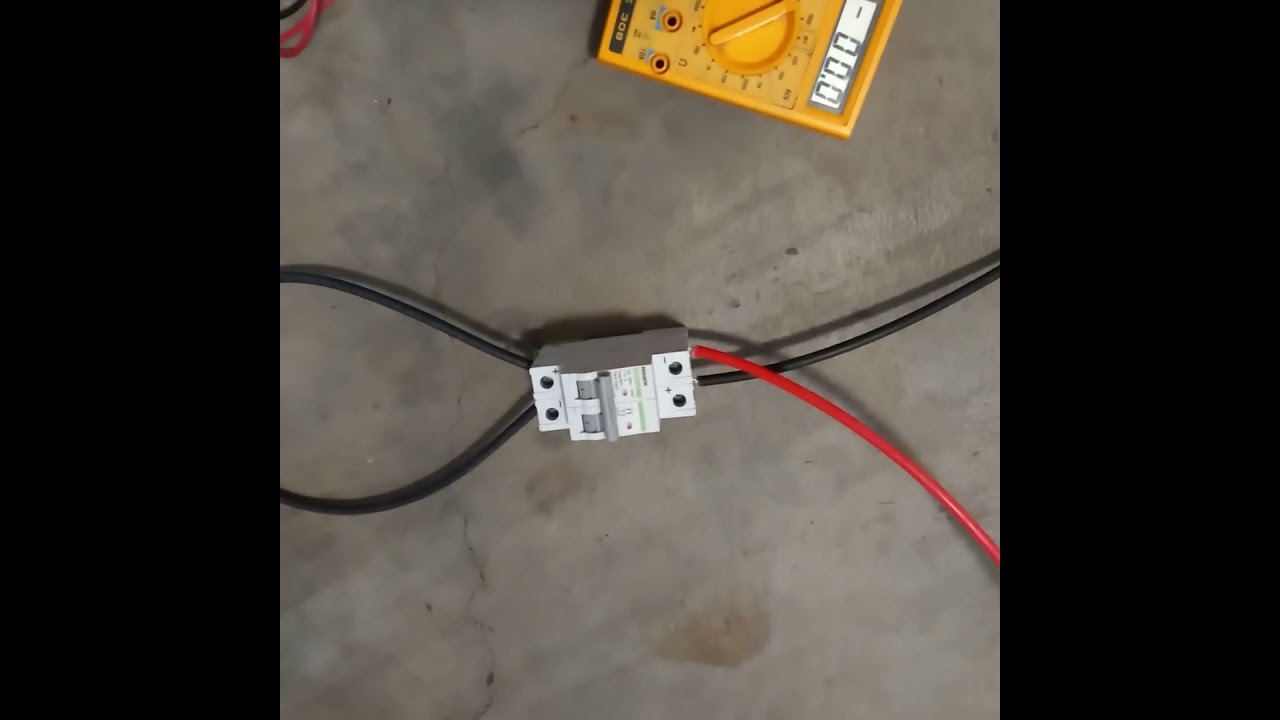Yes. This thread is about combiner boxes, which connect multiple strings in parallel. In this case, the combined output of all parallel strings can flow through a fault in one string.
Got it. Thanks for clarifying.
So one should use fuses as well as non-directional DC circuit breakers or DC switches.
I assume one uses a pair of fuses per string.
Do you use the DC circuit breakers/switches per string as well, or for the combined feed ?
For science, I decided to sacrifice a brand new polarized DC breaker, a Noark EX9BP-JX. The one under test is rated 500V 16A.
Wired with correct polarity at 169V:
Wired with incorrect polarity at 169V:
The breaker survived the test with incorrect polarity, but there was a much bigger flash than when it was wired the correct way around. I tested the breaker a third time, with the polarity corrected, and it still worked. I don’t know how much damage was done to its internals so I probably will not use it.
With this result I’ve decided not to replace my breakers, but of course my strings are at a relatively low voltage. YMMV
If you’re not going to use it… (and you have a way of doing this)… why not supersize the experiment and blow it up? ![]()
What is your “relatively low voltage”?
Unfortunately I don’t have acess to a higher voltage as well as current. My PV inverter is at 340V, but that’s a single string so only 10A. I suppose I could switch the breaker manually to see if the arc is sustained. I’ll put that on my to-do list.
I have 400W Canadian Solar model CS3W panels in a 4S4P configuration. I wired the breaker to the combiner box output for this test. Voc = 169V.
So here is me thinking … no flames because NoArk is a brand name, not a cheap Chinese import?
16A breaker trips @ 40a … I think I will make sure I have some fuses as well.
That’s normal. Both fuses and MCBs have inverse time curves. They’ll blow (or trip) around their denoted values, but you’ll wait longer. The greater the amount you exceed the current threshold by, the shorter the time.
So it isn’t to automatically conclude a fuse would’ve had less of a delay.
This also bites you in reverse. If you run a 40A breaker at 30A continuously, in 30°C ambient temperature, it will nuisance-trip once a day. Fuses also blow faster when they run hot.
What a “biting” “hot” “flaming” topic … even in “reverse”.
How about circuit breakers versus and/or fuses in ‘series’ strings, 450-500 volt strings, does the same apply
Fuses are cheaper and no no nonsense so these are preferred in most run of the mill systems from what ai have seen…
Getting back to basics: What is the maximum current for a 2.5mm² solar PV cable?
The same as any 2.5mm cable I’d say. A solar cable refers to its insulation rating and its UV withstand capability, copper is just copper.
Ok. What then in the maximum current for a pair of 2.5mm² cables in a conduit?
There are various DC ampacity, cable area & length, % loss calculators on the web.
I don’t think I’ve ever seen PV cable that thin. The choice is usually between 4mm^2 and 6mm^2. The ampacity when not used in open air will be the same as for any copper cable, those AC-tables you find all over the web is perfectly fine for this (the RMS value is equivalent to DC).
Getting two pairs of 4mm^2 cable through 20mm conduit is hard enough already, so the question might be moot anyway.
Indeed! I meant 4mm²
Before 4mm sq with UV protection cabling became the the de facto cabling to use, I used 2.5mm sq flex (sold as for panels). Proviso is that they have to be conduit-ed, I sommer used 15mm black irrigation pipe ![]()
But then 80W panels were the de facto standard as well ![]()
Rule of thumb I used was 16A max, no longer runs than 10m
Those were the days flying by the seats of your pants was the way to go ![]()

